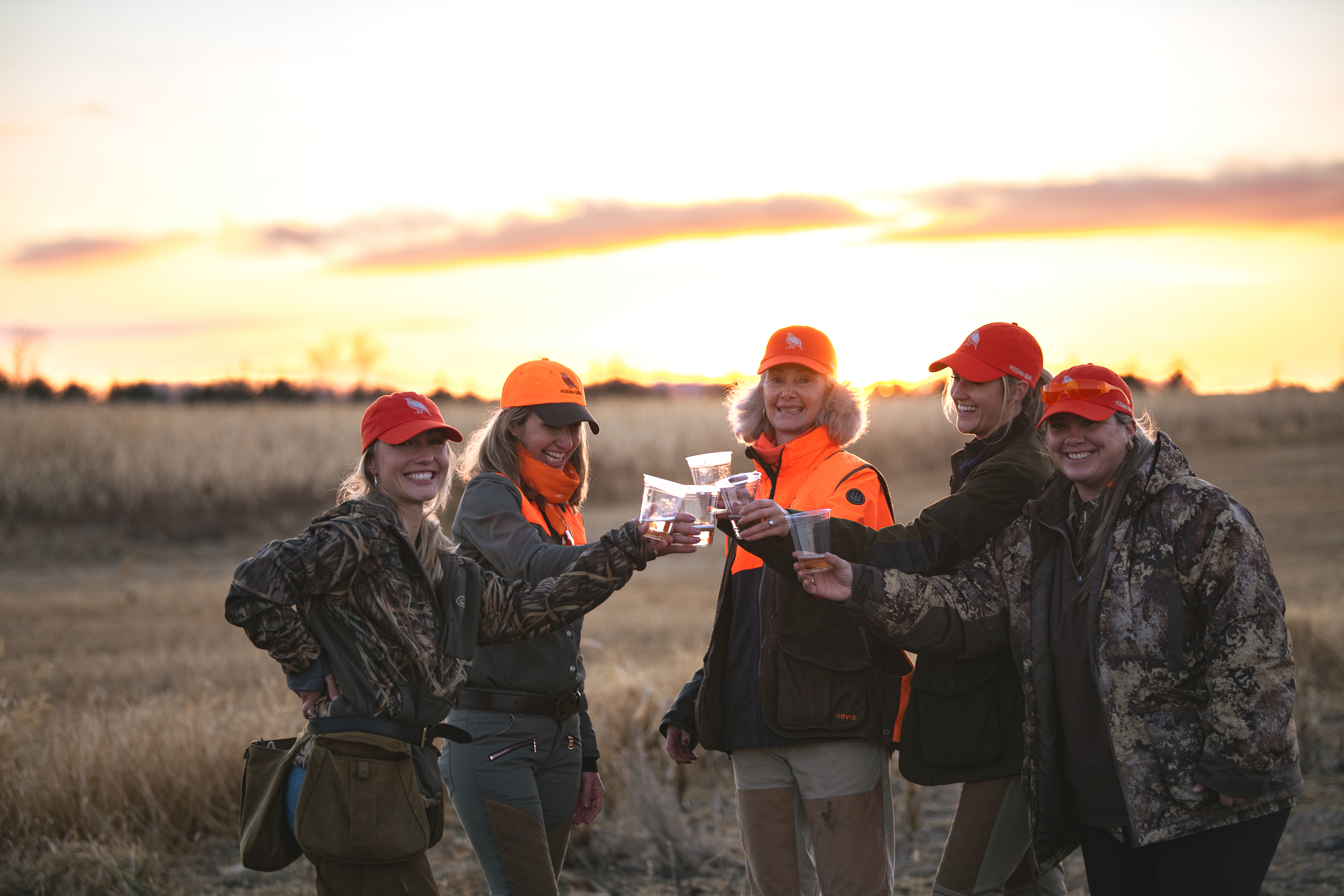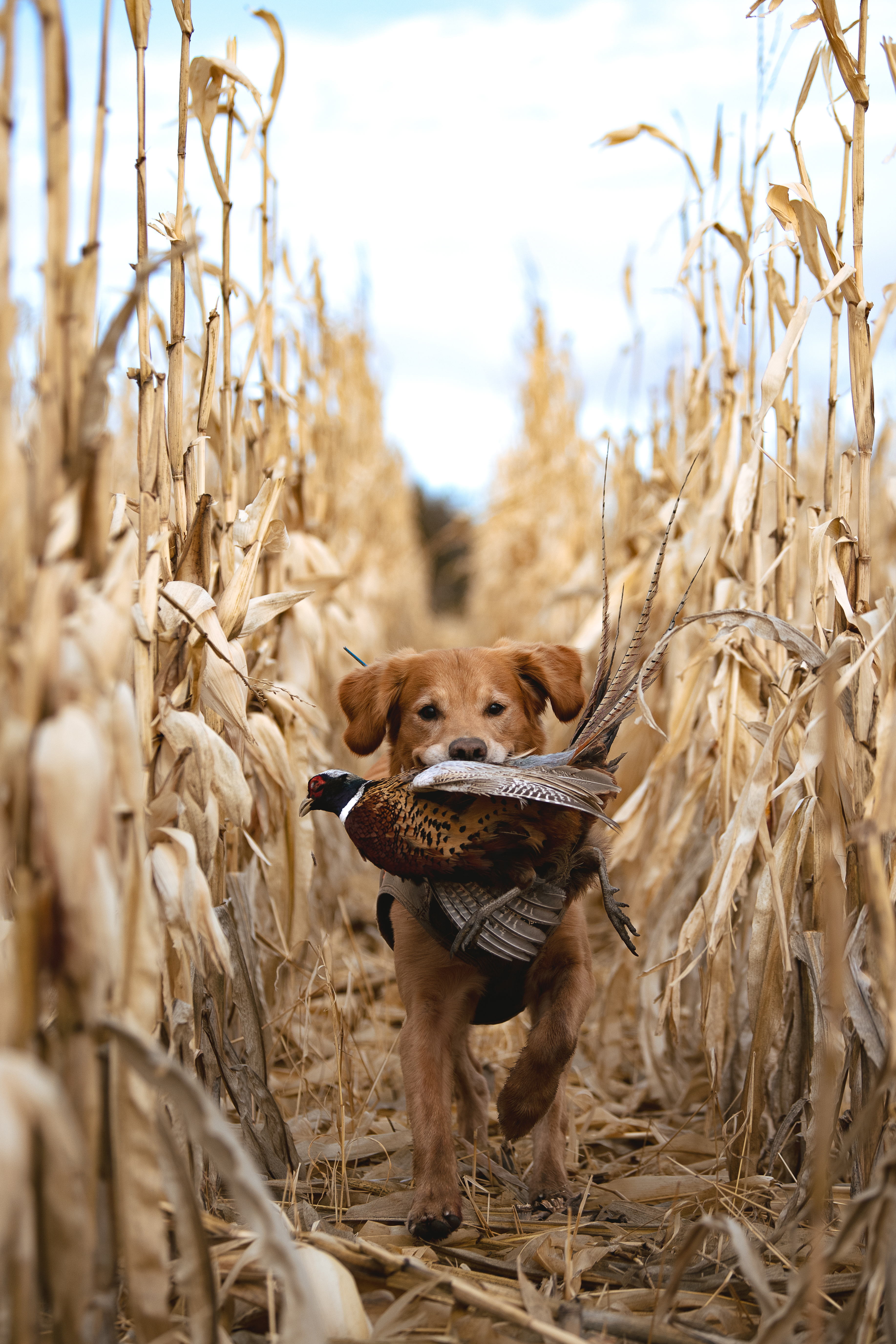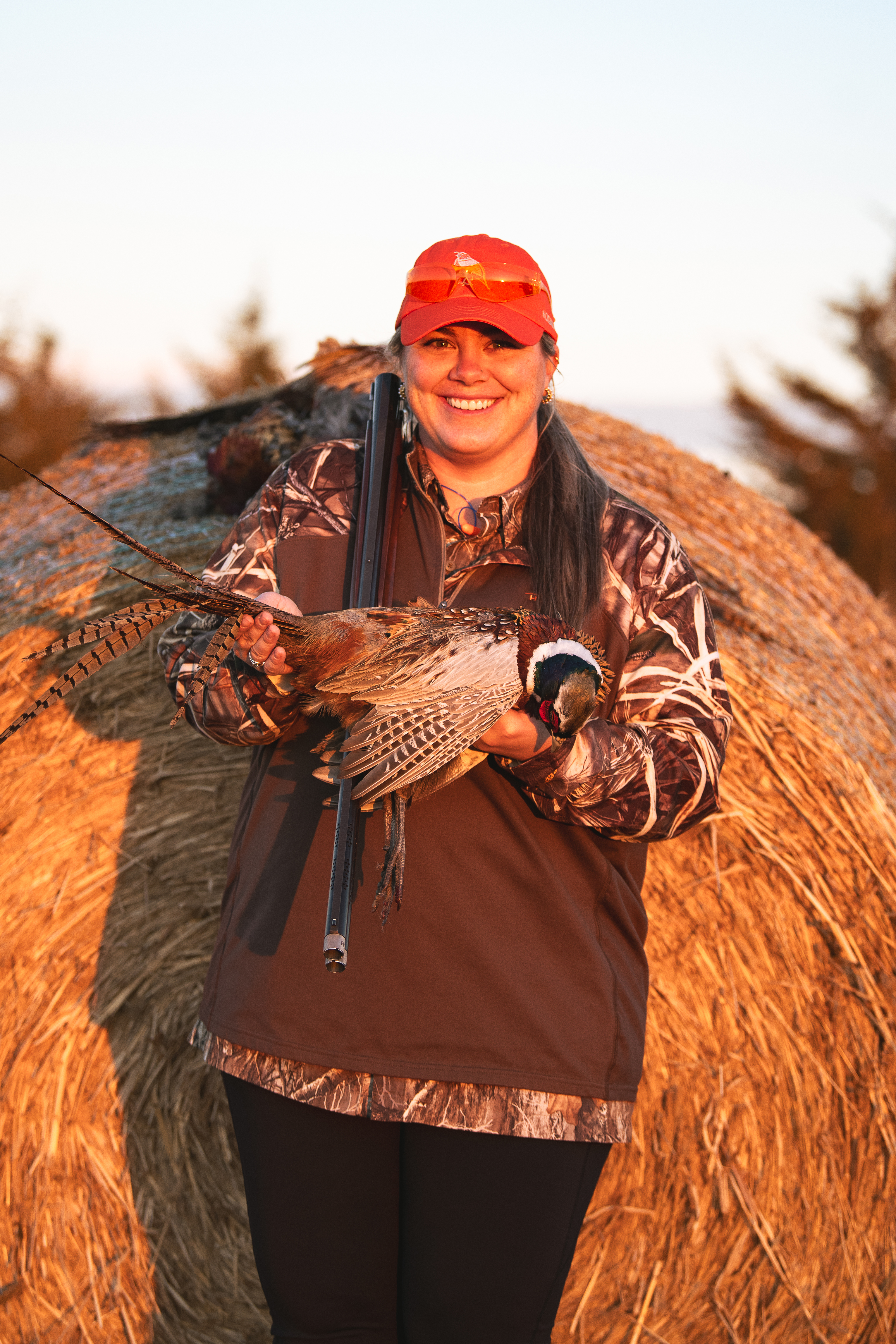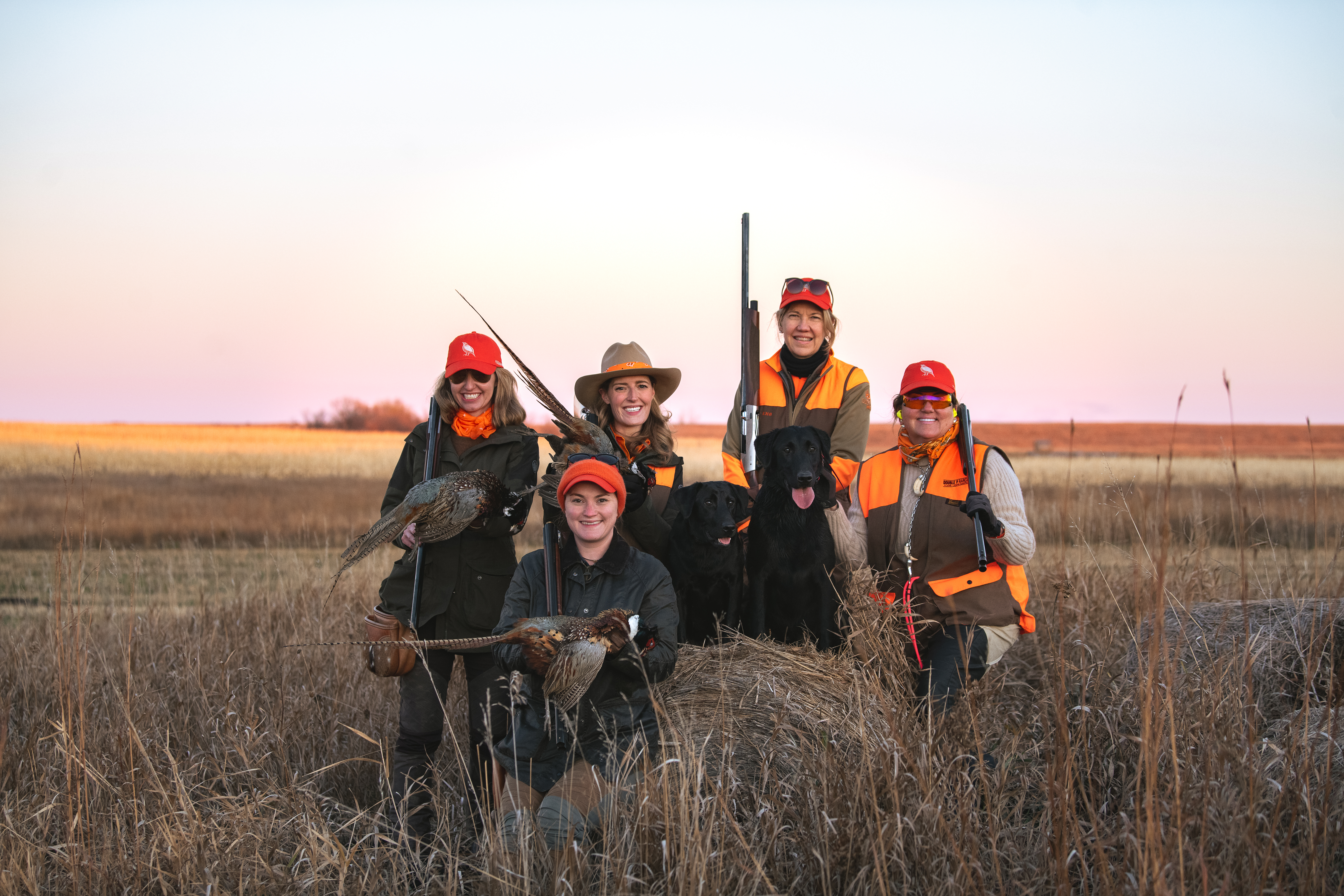Pheasant Hunting Heaven on the Coteau des Prairies

Pheasant Hunting Heaven on the Coteau des Prairies
By: Charlotte Schuster
As Seen in Texas Dove Hunter's Magazine
Prior to November 2024, I had never gone pheasant hunting. I had never joined a ladies group hunting trip before, either. So when an email from Amber Hayne’s McKenna Quinn came through my inbox about a hunting trip to the pheasant hunting mecca of the U.S. (South Dakota), I said, why the heck not? Turns out, putting myself in a new situation—without my trusty hunting partners of my husband or my father—showed me saying yes to new things is something I should do a lot more of.
Most folks think of South Dakota when they think of pheasant hunting, and for good reason. Pheasant hunting is big business in South Dakota, bringing in millions of dollars annually and representing about one-third of the state’s economy. This was evident the second you stepped foot off the plane and into the Sioux Falls Regional Airport ... a scene that felt oddly welcoming for wing shooters. Hunters from all areas of the world and creed flooded the baggie claim areas, dawned in camouflage and hunter orange and toting their checked firearms, all bubbling with the common anticipation of hitting the rooster fields soon.
This hunt was with seven other females from across Texas and Kentucky—most of us meeting one another for the first time when we arrived in South Dakota. Amber has a special knack for bringing together strangers together based on their mutual love for the outdoors and hunting, and setting the atmosphere for lifetime friendships and hunting memories to be made.
We hunted at Double P Ranch in Clark, and could not have been with a better outfitter. From expert guides and dogs who put on us birds and took care of us every step of the way, to down-home friendly staff and 5-star meals and accommodations, I left South Dakota knowing one thing was for sure: I’d be going back to Double P.
Double P Ranch straddles the western edge of the Coteau des Prairies, which is a geographic ridge which delineates the flatland region (James River Valley) from the Glacial Lakes, or the ‘prairie pothole region of South Dakota.’ The ranch is located in the heart of the North America Central Flyway.
Being a pheasant-hunting first-timer, I wasn’t quite sure what to expect, but knew I was in good hands. That first evening, after a gourmet chef-prepared meal, our guides met with us in the lodge and went over basic safety rules and pheasant hunting how-to's.
The next morning, we got our upland orange gear on and warmed up for our hunt with a little 5-stand shooting.
Then the moment I'd been waiting for with great anticipation was right in front of me ... standing in a South Dakota grain field with excited dogs, cold breath in the air, and the excitement that I'd soon harvest a new-to-me species and experience pheasant hunting in the country God intended it to be done. And I won’t lie ... it doesn’t matter if the animal has wings instead of antlers. When you’re hunting something for the very first time, in a new settings and new hunting companions beside you, that is an adrenaline rush like no other. The kind that us hunters thrive on. The first time a rooster flushed and took the sky mere feet from me; my heart and blood were racing so fast you wouldn’t have known it wasn’t the largest trophy deer I’d ever seen that I was aiming my gun toward. I think I missed the first one or two I shot at, probably due to nerves or just plain poor shots, but once I connected with a rooster, I knew what to do. And I wanted to keep doing it. I was hooked.
I think one of the neatest takeaways for me was the hunting style, and how different it was than hunting migratory birds like dove and waterfowl. For dove hunting, you set up in your spot in the field and kind of wait for them to fly near enough to you to shoot. It’s not that it doesn’t involve work, but it doesn't inherently allow you to ‘flush’ or find birds if there aren’t any flying that day.
Pheasants are the complete opposite. You work; you walk. It reminded me of turkey hunting in that sense. The work, stalk, and wait with absolutely no expectation or confidence at times that your efforts would be met with a bird in the end. And it’s all so strategic, rhythmic and coordinated with the other hunters in your group, the guide(s), and the dogs. As soon as our group got the rectangular formation-style hunt down, I was hooked. It was so cool and so unlike any other hunt I’m used to. I loved how during each given dog push, any position in that formation was just as apt to have a bird in their purview. That was neat, it was fair, and it carried a certain level of anticipation to it that doesn’t always come with sitting a little more staler in a dove field or duck marsh.
My other favorite part of the “Rooster Rush” as it’s known in South Dakota, was watching the dogs work. And man, were they good at their jobs. The sharpened skillset and uncanny reliance on their noses to find the pheasants, it was distractingly neat to experience.



Watching those dogs work to sniff, find, and flush the roosters was so fun to watch that I had to make a concerted effort to pay attention to said flushing roosters.
The other—probably obvious—aspect of the hunt that will remain engrained in my brain is the absolutely raw beauty of those roosters. It’s unliked any other bird you can hunt, in my opinion. Some turkeys and maybe wood ducks get close, but hold no cigar to the true rooster. The deep purples, blues, yellows, and greens and the different patterns on each feather grouping, it is truly something to be appreciated and respected. Pair an evening rooster limit with a primetime South Dakota rolling field sunset, and maybe the occasional pop of mid-field champagne, you have yourself the perfect hunt in what a lot of folks would label as God’s Country.
I equally enjoyed hunting this exciting new species and hunting with different extremely talented and nice human beings from across our state. This hunt showed me we should all go out of our comfort zones and try new things, with new people.
Amber Haynes started her elegant-yet-functional-ladies' outdoor apparel company in 2017, with the mission of motivating female hunters and shooters to feel confident, comfortable, and look good, in the outdoors. In addition to running an extremely successful women outdoor clothing line (made proudly right here in Texas), Amber has recently upped the stakes yet again and become passionate about offering hunting trips across the globe for her McKenna Quinn subscribers. From cast and blast hunts on the Texas coast to quail hunts in Alabama, to fishing trips in Belize and Alaska, you name it, McKenna Quinn offers superior ladies and co-ed hunts to the avid hunter shouldn’t miss out on!


